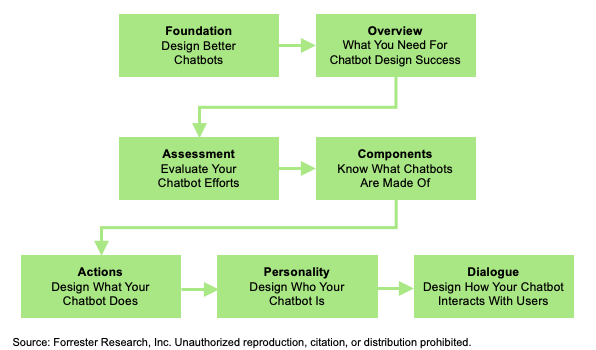Chatbots are everywhere but most people don’t bother using them. That’s right:
- A whopping 71% of companies have invested in offering a chatbot.1
- But only 16% of US online adults use chatbots often to get help.2
- And for almost a year now ChatGPT’s strengths have been damaging regular chatbots’ reputations even more.
What’s going on? Among our survey respondents, some told us that they just prefer phone or in-person contact. But many get annoyed at chatbots’ shortcomings, most often with bots: 1) not understanding what they need; 2) taking too long to solve problems; 3) being unable to help; or 4) making them start over.
Creating an effective chatbot is hard. To get it right, you need to master conversation design, a new discipline for creating experiences that are based on conversational AI. And you need to know where and when to use new technologies like generative AI (genAI).
If you’d like to learn more, check out my research series on the topic. It went live today and consists of seven reports: four new ones and three updates of already-live reports I refreshed based on new developments in genAI and additional research interviews I conducted:

Here, in a nutshell, are the challenges that each report addresses:
If you’re a Forrester client and you would like to ask me a question about designing experiences based on conversational AI, you can set up a conversation with me. If your company has expertise to share on these topics, feel free to submit a briefing request. You can also follow or connect with me on LinkedIn if you’d like.
Notes:
1Forrester’s Priorities Survey, 2023, found that 71% of business and technology professionals familiar with conversational AI indicate that their organization has invested in chatbots.
2Forrester’s March 2023 Consumer Pulse Survey found that 16% of US online adults said that they use chatbots often to get help from companies.








